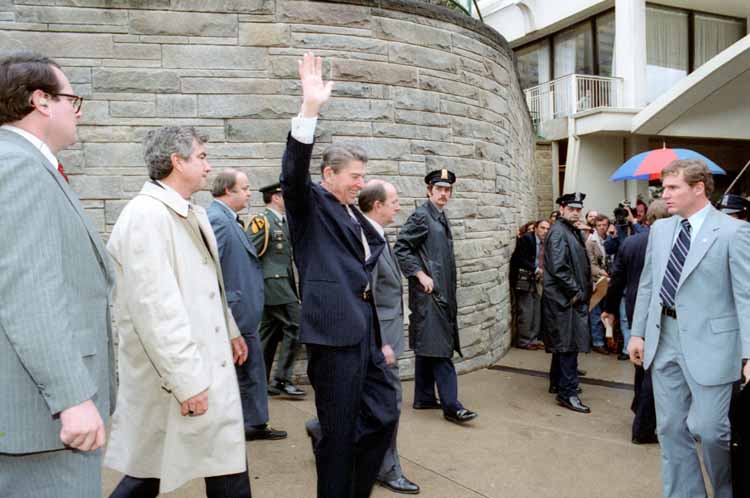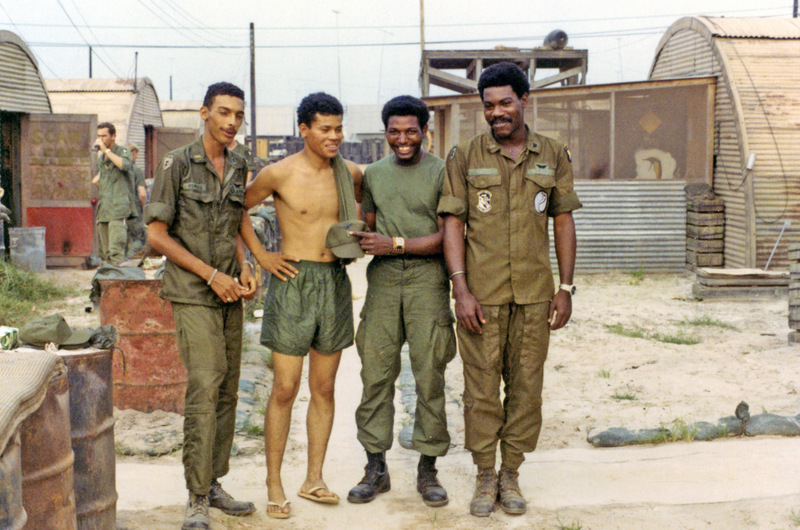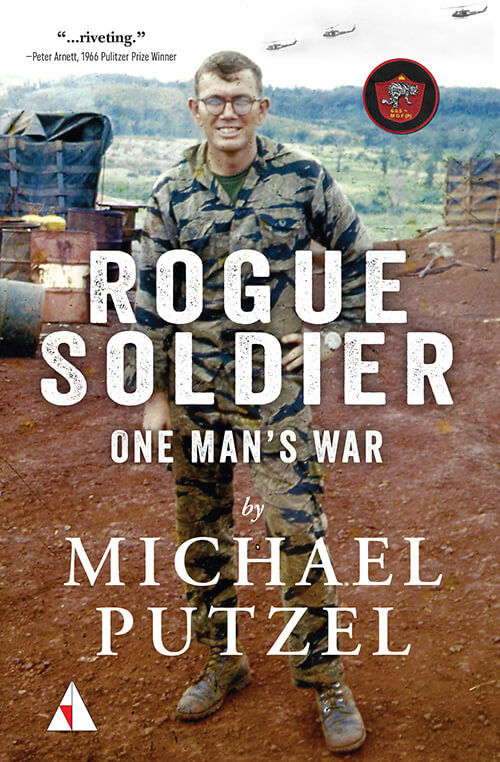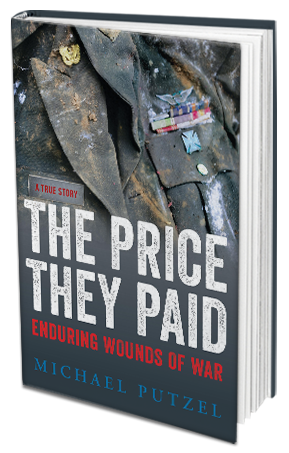Blog
Connecticut Lions distribute The Price They Paid to local school systems
Posted by • October 30, 2015

Robert Howard II was four years old when an American commander in Vietnam wrote him a letter telling him his father had died bravely in battle. The boy’s father had been a hometown sports hero, and the son grew up trying to emulate a man he never really knew.
As an adolescent, Robert II turned bitter and self-destructive, using illegal drugs to ease the pain and anger he blamed on having lost the hero father who left only a shadow that seemed to follow the young man everywhere. The boy was destined for disaster. In fact, a drug-induced seizure nearly killed him two days shy of the twentieth anniversary of his father’s death on Hamburger Hill.
Robert Howard II signing copies of a book that includes his story of growing up without a father
The angry […] READ MORE
The Man Who Saved a President
Posted by • October 10, 2015

WASHINGTON–Jerry Parr, the quiet, quick-thinking bodyguard who saved President Ronald Reagan’s life in the minutes after an attempted assassination, has died at 85. I don’t write news or obits anymore, but I got to know Parr after the events of that fateful day brought us together.
I was the Associated Press White House correspondent covering Reagan that day at what was expected to be a routine speech in the basement ballroom of the Washington Hilton Hotel, 1.4 miles north of the presidential mansion. As soon as the speech ended, those of us traveling in the motorcade scampered up the steps and out onto the Hilton’s private drive to watch Reagan come out a door reserved for VIPs and get into his armored limousine parked at the curb.
Jerry Parr with President Reagan […] READ MORE
A Famous Photo and Its Sad Backstory
Posted by • October 09, 2015

Associated Press photographer Sal Veder’s iconic image of a family welcoming its POW dad home from Vietnam has personified the joy of freedom for more than 40 years.
Veder recently retold the story to The Guardian of how he got that Pulitzer Prize-winning image on March 17, 1973, at Travis Air Force Base in California. Bill Dowell, a long-ago colleague of mine, pointed out that the photo hardly hinted at the truth: The day after he was released from more than five years in captivity and before he was flown home to the States, Air Force Lt. Col. Robert L. Stirm received a letter from his wife Loretta (2nd from right) telling him their marriage was over. There followed a protracted and bitter dispute between the returned POW and his wife that split the family asunder. […] READ MORE
What Did You Learn About PTSD?
Posted by • October 06, 2015
[Video clip] In a “Chat with Champions” at the Skidompha Library in Damariscotta, Maine, author Michael Putzel was asked what his reporting taught him about PTSD.
https://michaelputzel.com/wp-content/uploads/2015/09/25.49_to_27.47_ptsd_putzel_07_14_2015.mp4
Suicide Among Veterans
Posted by • October 05, 2015
Although there seems to be general agreement that the suicide rate for veterans is 50 percent higher than the rate for nonvets, the Los Angeles Times found that suicide is somewhat more common among vets who never deployed to Iraq or Afghanistan than it is among those who went to war. Nonetheless, an average of 22 veterans take their own lives every day, a frightening number that needs immediate and ongoing attention.
New video clip
Posted by • September 26, 2015
Check out video clip from Skidompha Library, the first of several brief clips about the writing of The Price They Paid: Enduring Wounds of War. This is the response to a question about the hardest part of writing the book.
One Grunt’s Lifelong Struggle
Posted by • September 13, 2015

Howard Patrick didn’t expect to be drafted. He was married, expecting a baby and had a job in the hot new world of high technology, working for IBM, the top of the mountain in those days. When his induction notice arrived, he was stunned–and frightened. He had had student deferments earlier and thought his marriage would keep him out of the service, but it didn’t. He considered fleeing to Canada but decided he couldn’t desert his country or screw up the future for his fledgling family. He also figured his technical expertise would land him a secure post running or fixing computers for the Army. It didn’t.
Instead, he was awarded the MOS (military occupational specialty) known as Eleven Bravo: light weapons infantryman. He would be a lowly grunt. In those […] READ MORE
Brothers in War Now on Hulu
Posted by • September 07, 2015
A couple weeks ago, I praised a National Geographic documentary in this blog, saying Brothers In War was amazing, that it had been nominated for an Emmy and that, unfortunately, it was not readily available for viewers to see online or on cable. I’m pleased to report that NatGeo has since made a trailer and the full doc available on Hulu.com. Check out Brothers in War.
Vietnam Chopper Pilots’ New Chief
Posted by • August 25, 2015

When Clyde Romero is inaugurated as president of the Vietnam Helicopter Pilots Association on August 29, two members of a tiny Band of Brothers will be on hand to applaud their long-ago comrade-in-arms.
The fourth flying soldier in their practically unique group died a hermit several years ago. All four men were black and members of the same storied air cavalry unit in Vietnam.
At the reunion banquet in Washington of the 16,000-member Vietnam Helicopter Pilots Association, retired Colonel Romero will become the first African-American to be elected president of the VHPA.
Romero was 19 when he flew his OH-6 scout into the most dangerous antiaircraft battle ever endured by helicopters and their crews. His “little bird” was part of a flying U.S. armada supporting thousands of South Vietnamese ground forces in an […] READ MORE
Brothers in War
Posted by Michael Putzel • August 16, 2015

I have just watched an amazing documentary about a company of draftees sent into the Mekong Delta in 1967 as part of the 9th Infantry Division. Like The Price They Paid, the film focuses on a single unit and the hellacious combat the troops encountered, the bonds they forged and the losses they endured.
Unlike my book, Brothers in War weaves together latter-day interviews with the soldiers and remarkable archival footage, including home movies and the work of Army combat cinematographers, to show viewers what the men faced in the rice paddies, muddy canals and hamlets that were the fighting fields south of Saigon. The year, 1967, was a dreadful time for American forces fully committed in a country they didn’t understand and a type of warfare they hadn’t learned to […] READ MORE






